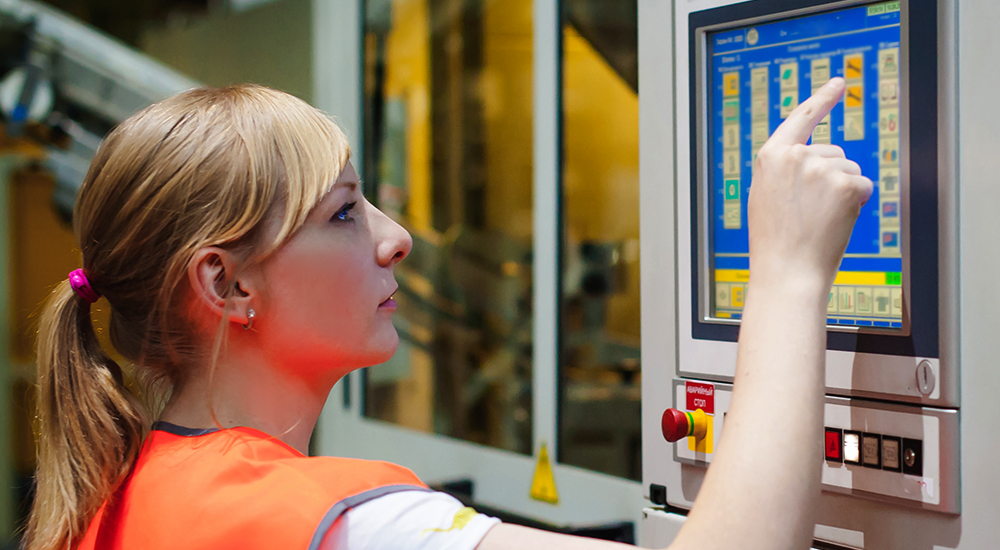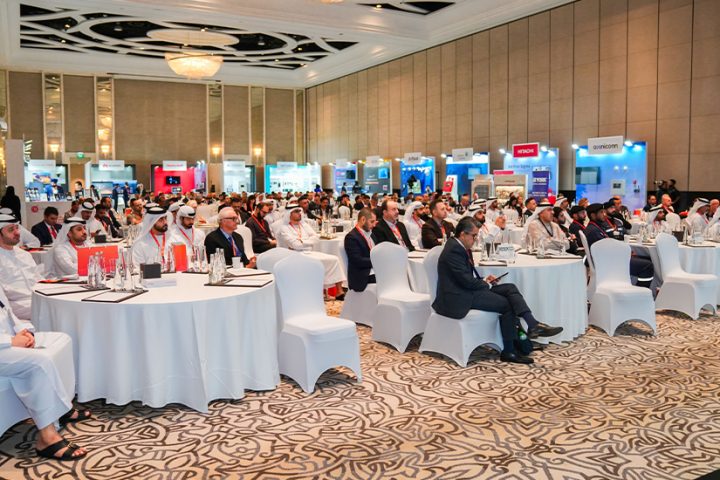Fast-flying social media. Rising material and labor costs. Agricultural inputs insecurity. Shrinking margins. Constantly changing consumer preferences. Fresher. More convenient. Local. Organic. There is no question this is one of the most challenging times for the food manufacturing sector, but it is also one of the most exciting and hopeful. In the Middle East and North Africa, and globally, these challenges are arising at the same time as digital industrial solutions are increasingly available.
From the Industrial Internet of Things to connected factories to predictive maintenance and intelligent asset strategies, the dramatically lower costs of smart sensors, the cloud, big data, and analytics is providing the tools food and beverage companies of all sizes need to overcome today’s challenges and prepare for tomorrow’s opportunities. This digital tornado represents a once-in-a-lifetime opportunity to make not just incremental improvements, but a transformative step-change across a company’s manufacturing operations.
The food and beverage industry is experiencing a period of transition and challenge. Large global consumer packaged goods companies are facing shrinking margins and lower growth, with the security of agricultural inputs an emerging challenge. Gulf countries, for example, have joined Asian countries such as China in looking to secure agricultural supply through the purchase of farmland in Africa and beyond.
Consumer packaged goods companies, which have been consolidating over the past decade, are looking for ways to spur growth at a time when smaller, more agile brands are expanding quickly, spurred on by consumer preference for local, authentic, healthy, organic products that speak to their values. As well, consumer packaged goods companies face a world with fewer untapped markets, so growth cannot rely only upon emerging markets.
Change management
There is no doubt that the impact of digital industrial solutions can be dramatic. However, the process of moving a company into the digital world is as important as the technology itself. It is a journey that is very different from any type of IT implementation. For starters, it is a process that can only succeed if the leadership is fully committed and driving the change. It is a precondition. If the CEO and top leadership do not believe, then do not start. The driving force for this change must come from the top, with the leadership saying, This is what we want to do.
Because so much collaboration is required within a company undergoing a digital transformation, the whole culture must be ready. If there is not a general feeling that this is the way to leapfrog competition, it is difficult to make much progress. Digital transformation drives industrial operations efficiency improvements by accessing the right information at the right time to make the right decision. To get its full impact, everyone has to be on board.
The transition also must be focused on solving specific problems, for example, addressing a high defect rate or frequent unplanned maintenance. Do not talk about the new technology. Talk about the pain, the problem you want to solve. Moving to decision-making that is guided by applications is a big shift for those working in the plant as well. It is important, to involve operators and supervisors in the design and implementation of any digital industrial solution. This not only helps ensure the solution will address real pain points, but it also builds more ownership in the new system and creates champions within the organisation.
Increasingly, integration will be a defining feature of the food and beverage industry, both regionally and globally. Manufacturing plants will use integration to achieve the operational performance required to remain competitive, while linkages among suppliers, consumer packaged goods companies, and retailers are needed to drive out inefficiencies and address customer needs with pinpoint accuracy. This integration will be built on digital industrial solutions and Industrial Internet of Things capabilities.
For food and beverage manufacturers to be part of this future, they must begin the process today. That is not only because adopting these solutions now provides a competitive advantage, but also because the digital transformation process takes time to become fully operational and advantageous. The benefits, though, are huge.
20% performance improvements today; new business models and revenue streams tomorrow; and future proofing to ensure manufacturers are ready for the food and beverage sector that will use integration to deliver lean supply chains and just-in-time manufacturing to meet highly targeted and fluctuating consumer demand.
Pain points and benefits
As GE Digital executives meet with food and beverage manufacturers across the region, they are seeing opportunities for productivity and other operational gains of up to 20% through implementation of digital industrial solutions. Those are huge numbers in an era of tight margins. These digital industrial solutions can be leveraged beyond the factory floor, by linking back into the supply chain and forward to retailers, both online and brick and mortar, and even to consumers.
This type of integration opens the door to concepts such as just-in-time production and incredible flexibility that helps deliver just the right product with just the right features and quality, at the right time to consumers right where they want it.
Digital industrial solutions can deliver a range of benefits, including improved overall equipment effectiveness, asset utilisation, throughput and product quality, and reduced downtime, waste, defects, energy consumption and total cost of ownership. Additionally, digital industrial solutions can help reduce spare parts inventories and drive the shift from scheduled maintenance to predictive maintenance for improved productivity.
It can help organisations to shorten outage, repair and maintenance times by ensuring that the right engineer is available at the right time with the necessary equipment, parts, equipment history and repair expertise.
Ultimately, in addition to double-digit productivity gains that GE has determined can be achieved in the near term by many food and beverage manufacturers in the MENA region, looking long term, digital solutions can help these manufacturers achieve operating efficiencies exceeding 95%, and a 10% reduction in total cost of ownership and cost of production, delivering better pricing to consumers and better margins to manufacturers.
By bringing together new and increasingly inexpensive technologies such Internet of Things, sensors, the cloud, big data analytics, and Internet connectivity, digital industrial takes industrial data, analyses it to gain insights into how operations can be improved, and then enables operators to make changes on the factory floor.
The benefits include increased productivity, preventive maintenance, and reduced errors as well as greater consistency, higher throughput, and improved compliance. At the heart of the process is connecting data. This comes from sensors attached to equipment, as well as from the 50 to 75 applications typically running in a facility. With this data providing visibility into operations, more insightful SWOT analysis helps identify opportunities for improvement.
Longer term, once an operation has been optimised, digitisation can become a driver of innovation. Some of the main digital industrial applications in use include Asset Performance Management software to help optimise equipment performance and enable predictive maintenance, and Field Service Management, software that helps improve efficiency of the repair and maintenance process.
Manufacturing Execution Systems bring these optimisation capabilities from the asset level to the facility level, while Digital Twin software creates a virtual representation of an asset or process in order to help operators explore changes to outside factors or controlled inputs in order to identify more optimal operating parameters to improve operations or prepare for external changes such as weather, requested customer changes, or some change in manufacturing inputs.


Key takeaways
Strategy
- Digital industrial solutions can be leveraged beyond the factory floor, by linking back into the supply chain.
- Long term, digital solutions can help manufacturers achieve efficiencies exceeding 95% and 10% reduction in cost of ownership and cost of production.
Execution
- Just-in-time production to deliver right product with right features at right time to consumers where they want it.
- Opportunities for productivity of up to 20% through implementation of digital industrial solutions.
Cash
- Improved equipment effectiveness, asset utilisation, throughput and product quality, reduced downtime, waste, defects, energy consumption, total cost of ownership.
- Reduce spare parts inventories, drive the shift from scheduled maintenance to predictive maintenance.
- Shorten outage, repair and maintenance times by ensuring right engineer is available at the right time.
Source excerpted from: A Bold Future for MENA Food and Beverage Manufacturing, by GE.



















